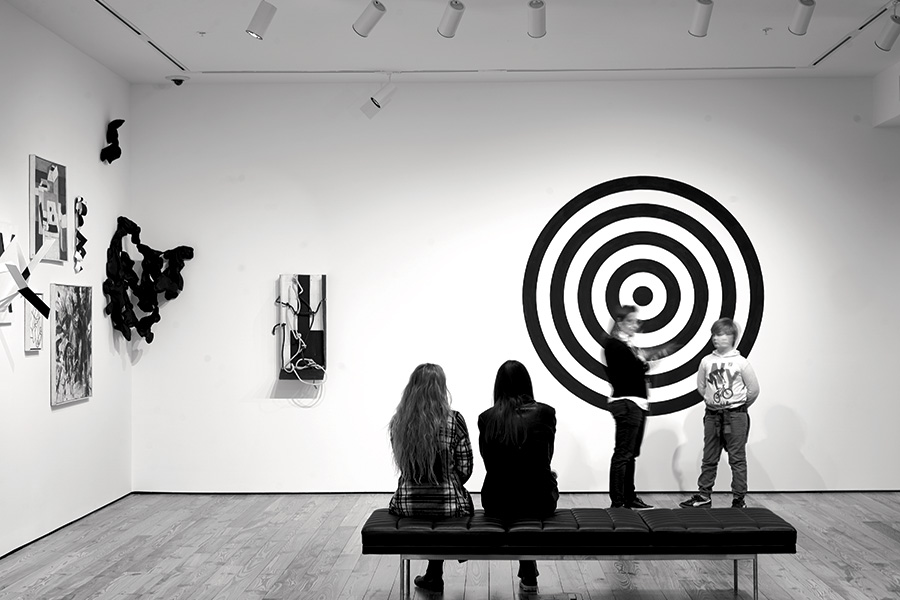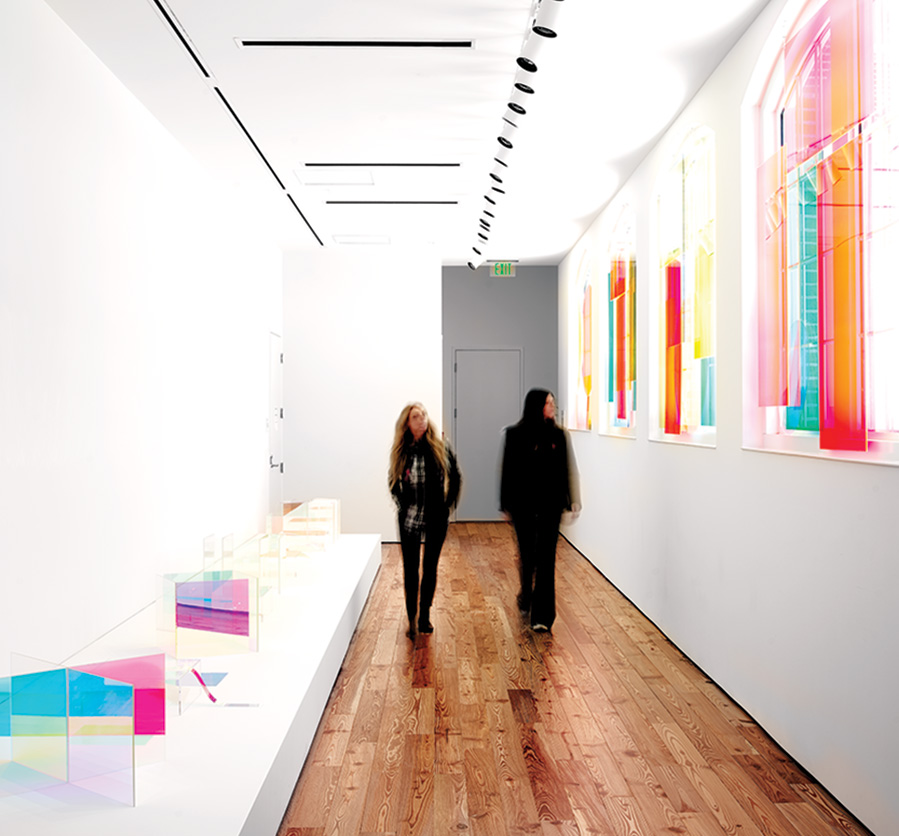Upon entering the open foyer of the Sarasota Art Museum of Ringling College of Art + Design, discover a hidden nook in the corner by the elevator, displaying “the 28 colors of Sarasota” in a ladder of painted pigments and handwritten local touchstones sharing the designated color. From the bold yellow of the lifeguard station at Siesta Key Beach and the rallying orange of Sarasota High School, to the deep green of Selby Gardens and the iconic purple of Van Wezel Performing Arts Hall, the display plays perfectly with the top floor’s featured exhibition of Color Theory & (b/w). This is the first installation of an ongoing investigation into the art and science of color, where the museum invites you to pay close attention to the artists’ use of color, relative to their mediums and use of materials. Inspiring contemporary ideas and bringing transformative thinking to the foreground, discover how colors evoke certain feelings or reactions, notice how they can shift from a simple change in perspective, light and reflection.

A SITE-SPECIFIC WALL PAINTING INSTALLATION, TITLED TARGET BY DAVE LEWIS. ALSO ON THE TOP FLOOR OF THE COLOR THEORY EXHIBITION. PHOTOGRAPHY BY WYATT KOSTYGAN.
Down an open hallway with East-facing windows, find Christian Sampson’s Vita in Motu, a durational site-specific installation. “Sampson has collaborated with the architecture of the building, and with Mother Nature herself, to deliver this awe-inspiring art experience to our community,” says Anne-Marie Russell, executive director and curator of the Sarasota Art Museum. The Brooklyn artist experiments with dichroic film, acrylic and glass to curate a head-swiveling experience of solar projection and color motion. Different dimensions, vantage points and times of day all affect the solar projection of the art. The visually stimulating walk-through pleases, yet confuses, the eye—casting geometric shapes and prismatic shadows of color and light from every angle. The ethereal experience is all thanks to the Florida sun, penetrating through the line of windows at itinerant axle points as the day rises and falls. Depending on whether it’s dawn, high noon or peak sunset, the chromatic intensity of the space creates an ever-changing and surreal space. Some have described it as a spiritual sensation, like “being inside a stained glass cathedral,” while others, more tech-driven, imagined its engineering similar to “what it’d be like inside a microchip.” They say art is subjective. “Vita in Motu invites us to ponder our place in the cosmos,” says Russell. “Witnessing the passage of time, acknowledging that we are on a spinning globe that is orbiting around a great ball of fire, that is determining the structure of our time and seasons, is both humbling and elevating.” SRQ









